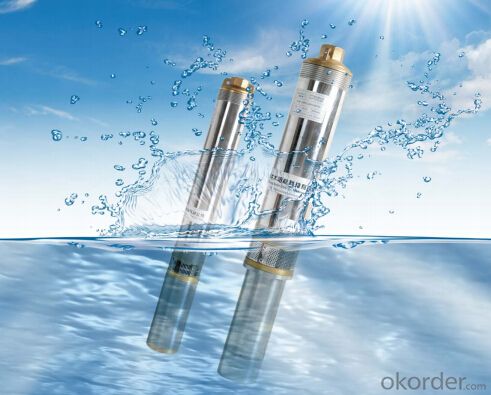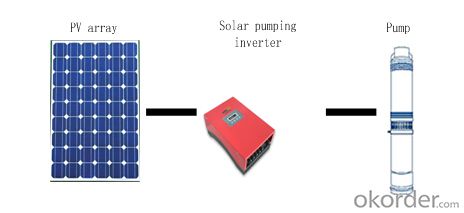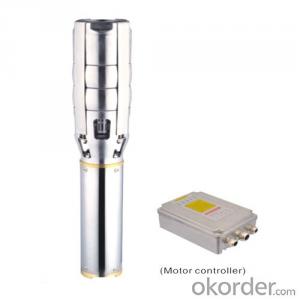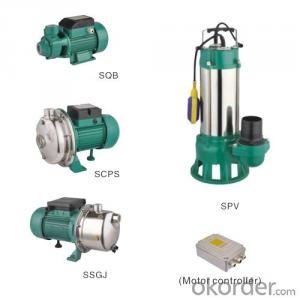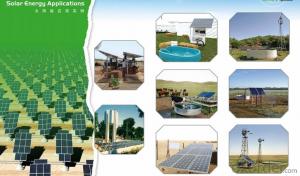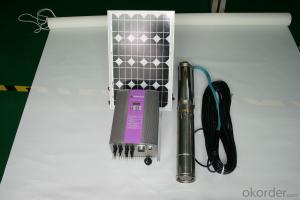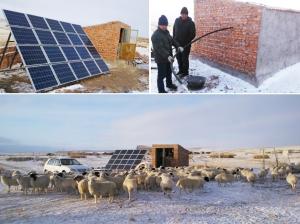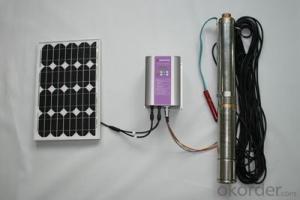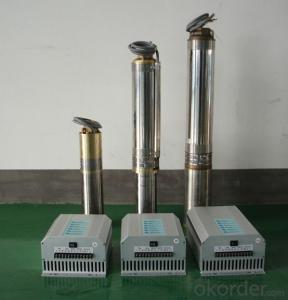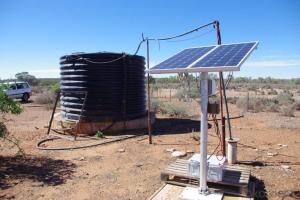Solar Pump for Water:0.1kw-37kw System Design / Helen
- Loading Port:
- Shanghai
- Payment Terms:
- TT OR LC
- Min Order Qty:
- 10 pc
- Supply Capability:
- 1000 pc/month
OKorder Service Pledge
OKorder Financial Service
You Might Also Like
The photovoltaic pumping system is different from the traditional AC pumping system , and the photovoltaic pumping system utilizes solar cells convert solar energy into electric energy , then the photovoltaic pumping inverter drives ac motor for the pump running , and pumping up water from water well , river , lake etc areas and then transport to the destination to satisfy our requests for the water demand .
Photovoltaic arrays adopts solar radiation energy to convert it to electric power ,providing the motive power for the whole system . And the function of the solar pumping inverter is converting the DC power output from PV array to AC power to drive the pump to finalize the water pumping up as well as adjusting the output power real-timely according to the change of sunlight intensity , in this way , the system realizes the max power point tracking and the solar energy can be utilized furthest
The whole system solves the water pumping up requests perfectly , omitting the battery bank and charge controller etc equipments , so it is very economical and environmental . Since they are with the merits of low carbon , energy conversation , environmental protection etc , so they have a broad market foreground and great social value
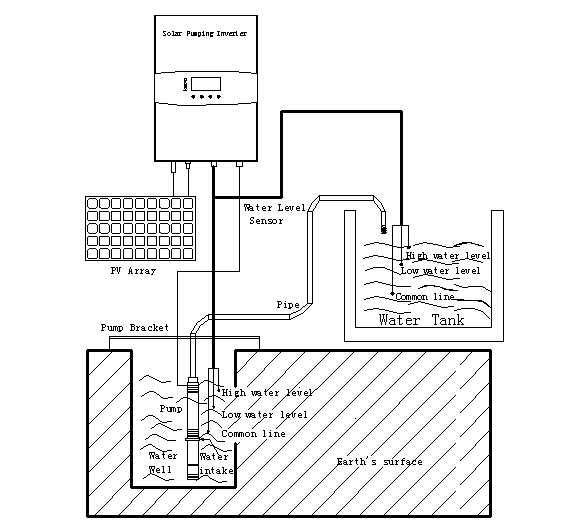
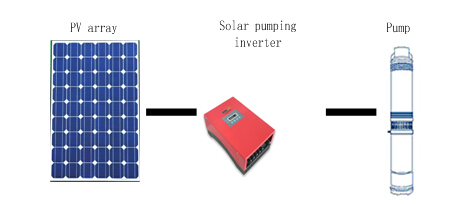
2.2 Application
Agricultural irrigation
Desert manage
Domestic water
Grassland animal husbandry
city waterscape
Island water supply
Landscape and fountain system of municipal engineering , city square , hotels and residence community
2.3 About product
This product is using a high performance digital signal processing chip, can provide solution for solar water pumpingsystem with high cost performance. Solar pumping system as a whole block diagram as shown in 2.
SHP series inverter has the following features:
a. True max power tracking technology (TMPPT) with our own intellectual property; effectively improve the use ratio of PV array. The stable tracking efficiency can reach 99.2% , Solving the problem of bad tracking efficiency and running unstability under the situation of sunlight intensity quick change when comparing with the traditional MPPT method .
b. Adopt efficient IPM power module from Mitsubishi Company with high reliability.
c. With the function of high and low water level detection , high safety factor.
d. Automatic anti-drying protection function , with multi-protection for motor
e. Multi-language LCD display , easy for operation , very user-friendly
f. The independent developed principal computer with our own intellectual properties , remote monitoring is available
g. Modular design , direct plug-in terminal , good-looking appearance, easy for installation , operation and maintenance .
h. Suitable for the pump adopted three phase asynchronous motor
i. Complete digital control , with the function of full automatic running and data storage .
j. Perfect protection system , with the protection function for lighting , over voltage , under voltage , short circuit , over loads , water drain off , low sunlight , over heating etc ,
k. Adopt the complete radiating system , so radiating efficiency is better and the service life is longer
l. Through strict environmental test , adapt the rigorous environment :-10℃~+50℃
m.No impacted mains supply power switch function (optional ), All-weather running available
n. Through strict environmental test , adapt the rigorous environment :-10℃~+50℃
1. How long will my inquiry get response?
Your inquiry related to our products or prices will be replied within 24 hours.
2. Can I get professional service and suggestion?
Well-trained and experienced staffs to answer all your questions in fluent English.
3. Do you accept OEM or customized design?
OEM & ODM, any your customized lightings we can help you to design and put into product.
4. What if I need specific design?
Distributorship are offered for your unique design and some our current models.
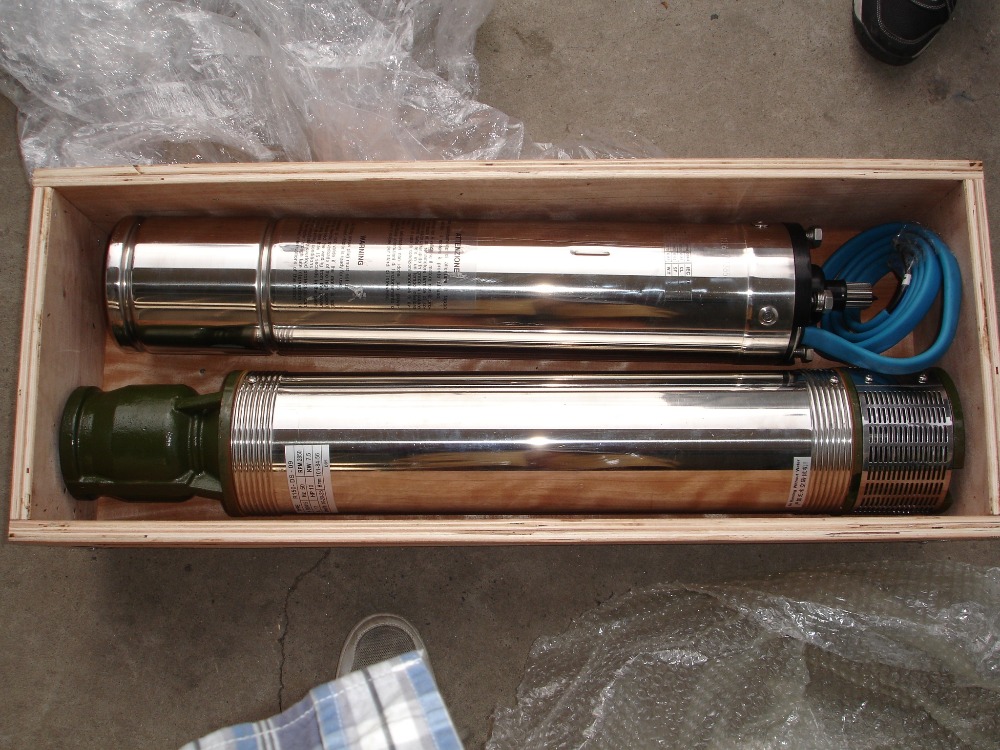
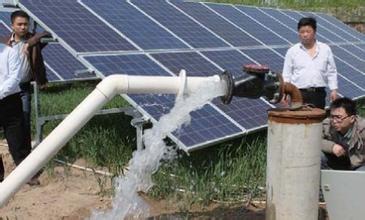
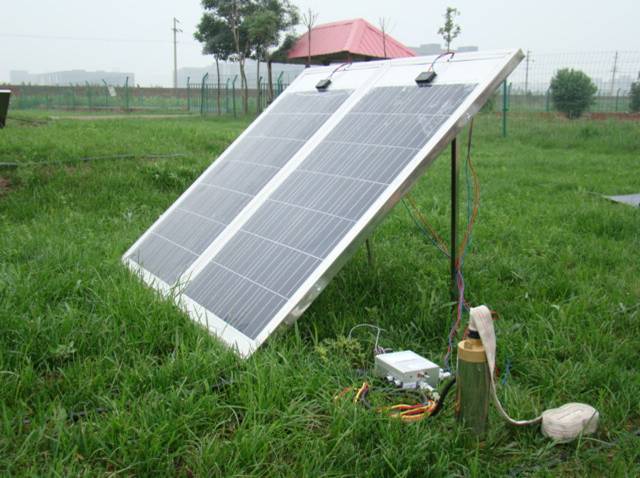
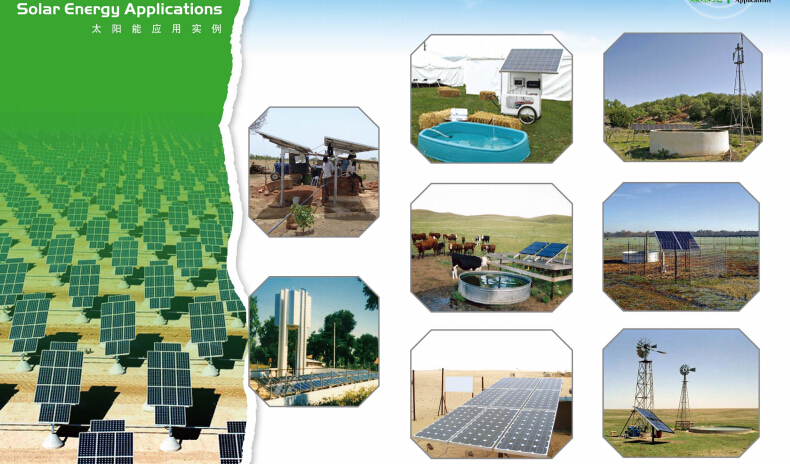
- Q: What is a solar pump?
- A solar pump is a device that uses solar energy to power a water pump. It converts sunlight into electricity, which is then used to run the pump and draw water from a well, borehole, or other water source. This technology is commonly used in areas with limited access to electricity or where traditional fuel-powered pumps are not feasible.
- Q: Can a solar pump be used for geothermal heating or cooling?
- No, it is not possible to use a solar pump for geothermal heating or cooling. Geothermal heating and cooling systems make use of the Earth's internal heat to provide temperature control for a building. This is accomplished by circulating a liquid through pipes buried underground, which absorbs or releases heat depending on the time of year. Conversely, a solar pump is specifically designed to circulate water or other fluids using energy from the sun. Although both systems rely on renewable energy sources, they have distinct functions and cannot be used interchangeably.
- Q: How does a solar pump help in reducing the risk of deforestation?
- A solar pump helps in reducing the risk of deforestation by providing a sustainable and renewable source of energy for water pumping, thereby reducing the dependency on traditional fuel sources like firewood and diesel. This reduces the need for cutting down trees for firewood and prevents the environmental degradation caused by deforestation.
- Q: Can a solar pump be used in remote locations without access to electricity?
- Yes, a solar pump can be used in remote locations without access to electricity. Solar pumps are designed to operate using solar power, which means they can function independently of the electrical grid. By harnessing energy from the sun, solar pumps can provide water pumping solutions in remote areas where electricity is not readily available.
- Q: What is the typical lifespan of the motor used in a solar pump?
- The typical lifespan of a motor used in a solar pump can vary depending on various factors such as the quality of the motor, maintenance practices, and operating conditions. However, on average, a well-maintained and high-quality motor used in a solar pump can last anywhere between 10 to 20 years.
- Q: How efficient are solar pumps?
- Solar pumps are highly efficient as they convert sunlight directly into electricity, eliminating the need for fuel consumption. Additionally, they have a longer lifespan, require minimal maintenance, and can be customized to meet specific water needs, making them a cost-effective and sustainable solution for pumping water.
- Q: Can a solar pump be used for water supply in coffee plantations?
- Yes, a solar pump can be used for water supply in coffee plantations. Solar pumps are a sustainable and cost-effective option for providing water to agricultural areas, including coffee plantations. They use solar energy to power the pump and can be used to extract water from wells, rivers, or other water sources. This makes them suitable for providing irrigation water to coffee plants, ensuring their healthy growth and optimal production. Additionally, solar pumps have low operational costs and minimal environmental impact, making them an ideal choice for sustainable water supply in coffee plantations.
- Q: What is the role of sensors in a solar pump system?
- The role of sensors in a solar pump system is to monitor and measure various parameters such as solar radiation, water levels, pressure, and temperature. These sensors provide crucial data that helps optimize the performance and efficiency of the pump system. They enable the system to adjust pump speed, water flow, and other parameters in real-time, ensuring optimal energy utilization and preventing damage or malfunction. Overall, sensors play a vital role in enhancing the functionality, reliability, and overall performance of a solar pump system.
- Q: Can a solar pump be used in areas with limited access to water resources?
- Yes, a solar pump can be used in areas with limited access to water resources. Solar pumps are designed to operate using solar energy, making them suitable for remote areas where electricity is not readily available. They can be used to extract water from various sources such as wells, rivers, and lakes, providing a reliable and sustainable solution for communities with limited access to water resources.
- Q: Will the next solar hot water system, the solar energy pump how to select the number,
- Generally need to calculate the total flow according to the collector area, a reasonable division of the branch and divided by the number of branches to calculate the branch flow, according to the collector test report on the flow resistance curve calculation and series calculation of the collector pressure drop;
Send your message to us
Solar Pump for Water:0.1kw-37kw System Design / Helen
- Loading Port:
- Shanghai
- Payment Terms:
- TT OR LC
- Min Order Qty:
- 10 pc
- Supply Capability:
- 1000 pc/month
OKorder Service Pledge
OKorder Financial Service
Similar products
Hot products
Hot Searches
Related keywords




